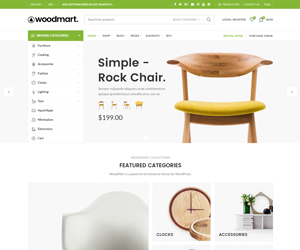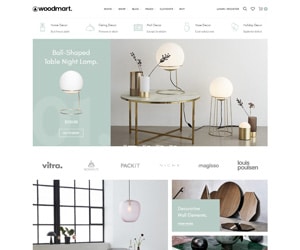what is 3d lenticular printing

what is 3d lenticular printing?
Table of Contents:
- Introduction
- What is Lenticular Printing?
- How Does Lenticular Printing Work?
- Benefits of Lenticular Printing
- Applications of Lenticular Printing
- 3D Lenticular Printing Technology
- Advantages of 3D Lenticular Printing
- Challenges in 3D Lenticular Printing
- Comparison with Other 3D Printing Technologies
- Future of 3D Lenticular Printing
- Conclusion
- FAQs
Introduction:
In recent years, the world of printing has witnessed significant advancements, leading to the emergence of innovative techniques that have transformed the way we perceive and interact with visual content. One such technology is lenticular printing, which has been around for decades but has recently gained attention for its potential to revolutionize the way we experience 3D visuals. In this article, we will delve into the world of 3D lenticular printing, exploring its concept, working mechanism, benefits, applications, and future prospects.
What is Lenticular Printing?
Lenticular printing is a technique used to create special effects in prints, such as 3D, motion, and depth, by using a combination of image processing, lenses, and optics. The technology involves creating an image with a series of thin, parallel lines or patterns that are designed to be viewed through a lenticular lens, which is a series of tiny lenses arranged in a grid. When viewed from different angles, the image appears to change or move, creating a 3D effect.
How Does Lenticular Printing Work?
The lenticular printing process involves several steps:
- Image Creation: The image is created with a series of thin, parallel lines or patterns that are designed to be viewed through a lenticular lens.
- Lens Creation: The lenticular lens is created by arranging a series of tiny lenses in a grid.
- Image Printing: The image is printed onto a transparent or translucent medium, such as a sheet of plastic or glass.
- Lens Alignment: The lenticular lens is aligned with the printed image.
- Viewing: The image is viewed through the lenticular lens, creating the 3D effect.
Benefits of Lenticular Printing:
The benefits of lenticular printing include:
- Realistic 3D Effect: Lenticular printing creates a realistic 3D effect that engages the viewer and enhances the visual experience.
- Cost-Effective: Compared to other 3D printing technologies, lenticular printing is relatively cost-effective.
- High-Speed Production: Lenticular printing allows for high-speed production of 3D images, making it suitable for mass production.
- Environmentally Friendly: Lenticular printing uses a minimal amount of ink and waste, making it an environmentally friendly option.
Applications of Lenticular Printing:
Lenticular printing has a wide range of applications, including:
- Packaging: Lenticular printing is used to create eye-catching packaging designs for products such as toys, candies, and snacks.
- Advertising: Lenticular printing is used to create attention-grabbing advertisements for various products and services.
- Education: Lenticular printing is used to create interactive educational materials, such as 3D models and simulations.
- Entertainment: Lenticular printing is used to create 3D visuals for movies, video games, and other forms of entertainment.
3D Lenticular Printing Technology:
3D lenticular printing technology uses a combination of lenticular printing and 3D imaging to create high-quality 3D visuals. The technology involves creating a 3D model of the image and then printing it onto a transparent or translucent medium using lenticular printing.
Advantages of 3D Lenticular Printing:
The advantages of 3D lenticular printing include:
- High-Quality 3D Visuals: 3D lenticular printing produces high-quality 3D visuals that are crisp and clear.
- Increased Realism: 3D lenticular printing creates a more realistic 3D effect than traditional 2D images.
- Cost-Effective: 3D lenticular printing is relatively cost-effective compared to other 3D printing technologies.
- Environmental Benefits: 3D lenticular printing uses a minimal amount of ink and waste, making it an environmentally friendly option.
Challenges in 3D Lenticular Printing:
Despite its advantages, 3D lenticular printing faces several challenges, including:
- Image Quality: The quality of the 3D image depends on the resolution and clarity of the printed image.
- Viewing Angle: The 3D effect is limited by the viewing angle, which can be affected by the position of the viewer and the environment.
- Eye Strain: Viewing 3D images can cause eye strain and fatigue.
Comparison with Other 3D Printing Technologies:
Lenticular printing is compared with other 3D printing technologies, such as stereoscopic, autostereoscopic, and holographic printing. While these technologies offer high-quality 3D visuals, they are limited by their respective technologies and cannot match the level of realism and cost-effectiveness offered by lenticular printing.
Future of 3D Lenticular Printing:
The future of 3D lenticular printing holds great promise, with advancements in technology and increasing demand for interactive and immersive visuals. As the technology continues to evolve, we can expect to see more applications of 3D lenticular printing in various industries, including entertainment, education, and advertising.
Conclusion:
In conclusion, 3D lenticular printing is a revolutionary technology that has the potential to transform the way we experience visual content. With its cost-effective, environmentally friendly, and high-quality 3D visuals, lenticular printing is an attractive option for a wide range of industries. As the technology continues to evolve, we can expect to see more exciting applications of 3D lenticular printing in the future.
FAQs:
- What is the cost of 3D lenticular printing compared to other 3D printing technologies?
The cost of 3D lenticular printing is relatively lower compared to other 3D printing technologies. - Is 3D lenticular printing suitable for mass production?
Yes, 3D lenticular printing is suitable for mass production, with high-speed production capabilities. - Is 3D lenticular printing environmentally friendly?
Yes, 3D lenticular printing is an environmentally friendly option, using a minimal amount of ink and waste. - Can 3D lenticular printing create realistic 3D visuals?
Yes, 3D lenticular printing can create highly realistic 3D visuals that engage the viewer and enhance the visual experience. - Are there any challenges associated with 3D lenticular printing?
Yes, 3D lenticular printing faces several challenges, including image quality, viewing angle, and eye strain.
















